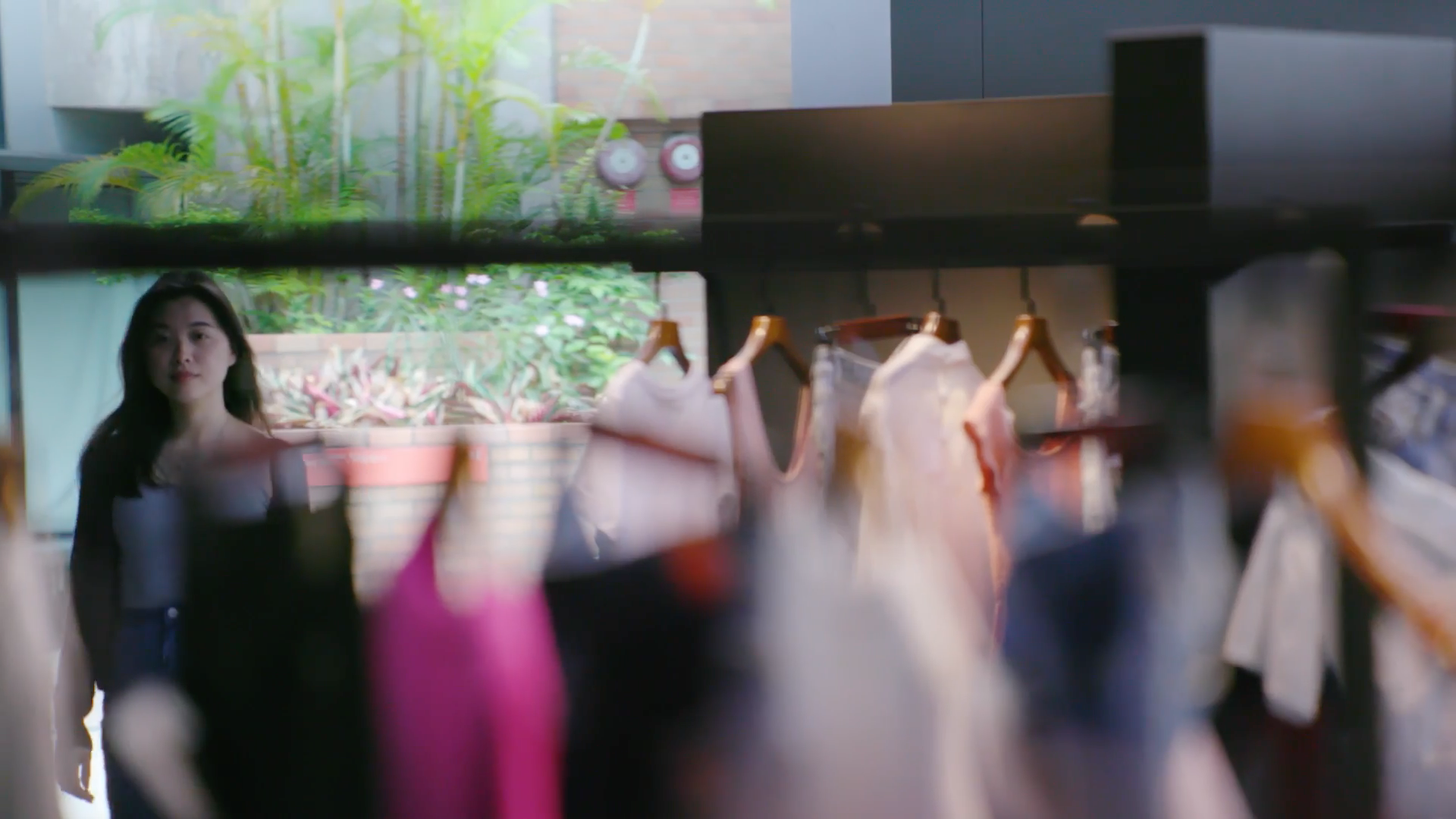There are a lot of reasons to prefer online shopping to the real-life experience – avoiding the crowds, being able to see all the available sizes and colors, and not having to lug around bags all come to mind.
But there’s also a glaring inconvenience with online shopping: You can’t try on clothes or accessories before you buy them.
Alibaba wants to close that gap by merging the two experiences. Its newest venture FashionAI takes almost all of the conveniences of online shopping and puts them into an inventory-filled brick-and-mortar store built with RFID racks and AI mirrors.
The store, a collaboration with students from Hong Kong Polytechnic University, is located right next to the college’s fashion faculty, “where academics, engineers, and fashionistas are working together to envision the future of fashion retail,” according to Alibaba Group blog Alizila.
Employees man the store to assist customers in dressing rooms and help with the process, but the technology runs the show. Mirror-screens display color and size options, suggest outfits, direct you to items within the store, and place items in a bag so they're waiting for you in a dressing room when you arrive.
You still have to figure out how to leave the comfort of your couch, though.
Here's how customers navigate FashionAI, the automated Hong Kong store where brick-and-mortar shopping meets e-commerce:
Customers check into the store with a mobile ID code by Taobao — the world's largest e-commerce website owned by Alibaba — before roaming the store and choosing items to put in their "bag."

Shoppers also have the option use a face scan for a more personalized experience.
When you pick an item off of the rack, an RFID rack tells the adjacent mirror what you've chosen and brings it up on the screen.

Here, the customer can see size and color options, as well as suggestions for the right outfit.

The system features in-store navigation, which displays a "You are here" type of map that can direct you to certain items in the store.

When the customer finds the right item, there's an option to add it to the cart — except here, the "cart" is the store's dressing room, which means you never have to worry about carrying a hanger around.

When the customer's ready to try on their clothes, they head to the dressing room, where an employee will sync the customer's cart items with one of the dressing rooms.

When the customer reaches the dressing room, store employees in the back are already identifying the items using QR codes ...

... locating them in the shelves and racks of inventory ...

... and placing the items in the dressing rooms, where they're ready and waiting for the customer.

In addition to making for a pleasant shopping experience, Alibaba says this also helps brands and the store collect real-time analytics, so that both can be more efficient: Brands can keep inventory more easily and store staff can serve customers more quickly.
Similar to the mirrors on the floor, you can update colors and sizes, and scan through accessories or clothing items that the AI system thinks would be a match.

Alibaba is careful to point out that there are no cameras installed in the fitting rooms.
If you want to try on a different color or size, an employee will be alerted to the change so they can bring over the appropriate item without you having to leave the dressing room.

There's also an app, in which the indecisive customer can review the items they've tried on long after they've left the store, and even see how they pair with items from other brands from both Taobao and another Alibaba e-commerce site Tmall.


